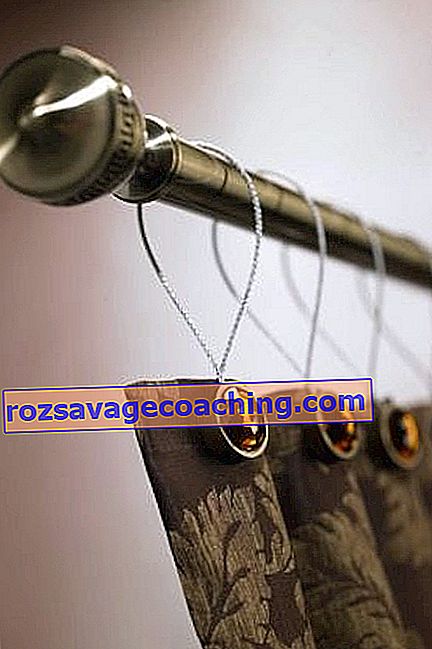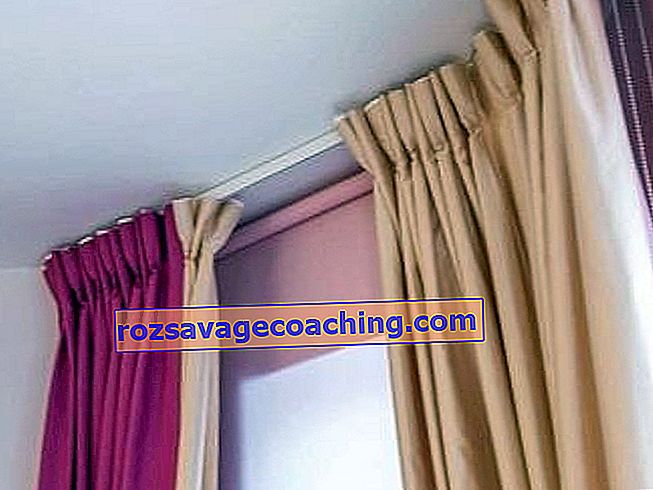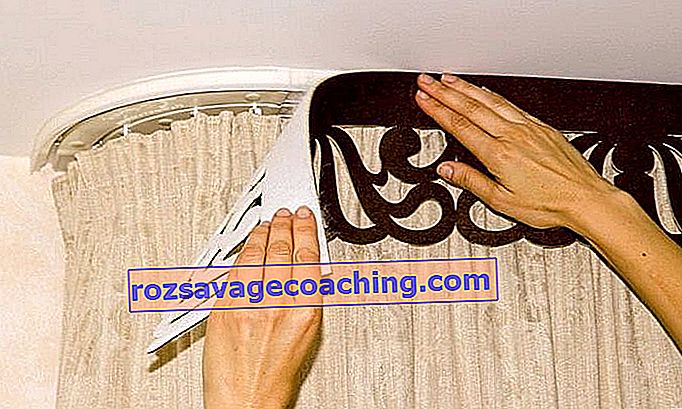
Having started renovations in a new apartment or simply changing the style in the room, special attention is paid to the framing of the windows. There are many options for blackout and decoration - curtains, curtains, blinds, and all of them must be attached to something, which is also an important element. The thing on which the curtains are hung is called a cornice. It can be custom-made or purchased from any home improvement store.

Varieties
Curtain rods are designed to support curtains, also embodying decorative functions in an interior of any style. But before choosing the desired cornice, you need to carefully measure everything, take into account the peculiarities of the location and shape of the window, the weight and variety of curtains, and the style of the interior. There are the following types of cornices.






By fastening methods
- Ceiling. Attached to the ceiling with screws, consists of a profile and guides, most often made of aluminum or plastic. A huge plus is that it can be attached no matter how much space is from the ceiling to the window.


- Wall. The classic look, which is attached to the wall with special brackets. For the manufacture of such curtain rods, plastic, metal or natural wood are used. The advantage is the many varieties of design.


In appearance
- Barbell. Traditional wall cornice in the form of a rod with several guides on which curtains, tulle and lambrequins can be simultaneously placed. The fabric is hung mainly on fasteners-rings, which easily walk on the bar without hindering their movement. Bar, handpieces and main holders can be selected in a variety of colors, shapes and designs such as Art Nouveau.

- Baguette. A flat cornice that can be attached to both the wall and ceiling. A hidden plastic rail makes the bindings and the top of the curtain invisible, the folds are even. The edges of the base can be selected with a rounding and placed in the entire wall, this solution makes the frame seem to be one with the wall, it looks neat and stylish. Most often it is made of plastic, which makes it lightweight and inexpensive, and is selected in accordance with the desired color, texture or ornament.

- Cornice string. Has a stretched metal cable between holders that are attached to the wall or ceiling. Used to accommodate lightweight fabrics - tulle, organza, nylon. Do not hang heavy curtains on such a cornice, as over time the string may sag. Often used in the kitchen.

By guiding system
- Flexible. A narrow cornice, which is used both for standard windows and for non-standard shapes - arch, attic, bay window and triangular windows, their base is polymer-metal.

- Telescopic. It is spacer with a sliding bar. It is installed when it is not possible to attach it to the ceiling or walls. When attaching it, no drilling of walls is required, since there is a spacer mechanism with a spring inside the base. Often such cornices can be seen in baths.

- Profile. It is versatile, as it can have different lengths and widths. At the base are guides for the runners, they can be mounted both on the wall and on the ceiling. They are well suited for a loft or Scandinavian style, since if matched to the color of the walls, they will be almost invisible. They are currently very fashionable.

By material
- Metal. Mostly aluminum is used.
- Wood. Made from birch, pine, walnut or beech.
- Plastic.



Also, all guides or rods are single-level, two-level or three-level, depending on how many layers of curtains are used.
Other types
Unlike standard types of curtain rods, there are a number of variations that are either modernized or additionally completed.
- Auto. It is based on a profile cornice with a built-in mechanism, with the help of which the curtains move apart in different directions or in one. The mechanism can be controlled by pulling the handle or by pressing the button on the remote control, then an electric drive is still required here.

- Lifting for Roman blinds. A lifting mechanism with rotor-chain or cord control is built into the cornice. By pulling the handle, the curtains can be folded up.
- For Japanese curtains. There are several guides in such a cornice, since Japanese curtains look like stretched canvas blocks that move apart on rollers, standing behind each other. Ceiling mounted.


- On furniture handles. A more decorated option, the curtains are attached to such a cornice using loops or rings. The spreading of the curtains is not provided.
- Velcro. Another option for attaching curtains, usually made of lightweight fabrics. Convenience is that the curtains can be easily unfastened for washing, but the disadvantage is that you cannot move the curtains apart. Ideal for beveled windows. One side of the Velcro is glued to the ceiling or wall and the other is sewn to the curtain.

Cornice styles
Since the cornice with window framing is part of the style in the interior, then on sale you can find exactly the one that will emphasize the peculiarity of the room:
- minimalism, hi-tech, loft - strings or metal rods are ideal;
- classic style - wooden and baguette cornices with traditional patterns;
- rustic style - curtain rods with forged tips and brackets (wood or metal);
- Japanese, Roman style - aluminum cornices;
- Art Nouveau - round cornices with large rings or eyelets.






How to choose the size?
The cornice can be positioned in relation to the window or in the width of the entire wall. Sometimes there are several windows on one wall and one continuous cornice is installed on the entire wall. You should also consider where the mount will be installed and what type of cornice is chosen for the room. If the curtain rod is a rod, then do not forget that they have decorative tips, which, if calculated incorrectly, may not fit. If a profile cornice is chosen, then it should also be taken into account that if a cornice with fillets is chosen, then the main part should be shorter than the required length. The length of the brackets should also be taken into account if there is a water pipe on the wall.

How to install correctly?
To install a wall-mounted curtain rod, you need to measure the length of the rod and guides and make parallel marks on the walls to drill holes for attaching the bracket. Next, we drill two holes at right angles. We drive in dowels of diameter as the resulting hole and 5-6 centimeters long. We fasten with screws for fastening the brackets, after which we insert the brackets, and in them there is already a bar with already worn rings or clamps.

To install a plastic ceiling cornice, you need to measure the location on the ceiling, collect all the components, mark future holes on the ceiling. Drill holes, insert dowels of the required size. Attach the cornice, screw it in with screws.
Types of curtain fasteners
When the base has already been selected, you should choose curtain mounts that are also diverse in functionality and design.
- Rings. They can be of different sizes, colors and materials. Attached to the fabric with hooks that are tied with ribbons or sewn on. They are used on a curtain rod. Easy to slide, making the movement of the curtain easy.
- Hooks. They are threaded into the guides of the cornice, and a curtain is attached to the lower part. There are ring hooks.
- Clamps. They fit into the guides, but they can also come complete with rings. They come in different sizes and shapes, very convenient to use.
- Eyelets. The rings that are located on the curtains themselves - in the upper part where the cornice rod is threaded, the diameter of the rings must match the diameter of the rod.
- Loops. Used only for curtain rods, as they snap to the base. They are sewn to the curtain, they usually choose the color of the curtains or the same fabric.




Selection and installation tips
Use the advice of professional craftsmen for installing curtain rods.
- If heavy curtains are to be used on the bindings, such as blackout, the base must be strong to withstand the load.
- If fasteners-rings or eyelets are selected, then in their diameter they should be larger than the diameter of the rod.
- Do not forget about stoppers for plastic curtain rods, which are placed along the edges so that the hooks do not fall out when the curtains are opened.
- When attaching the eaves, the walls should be examined in advance for the presence of internal pipes or cables, as they can be damaged when drilling the walls.

- External pipes can interfere with the position of the boom and curtains, this must be taken into account when measuring and choosing a mount.
- In a narrow room, it is better to place the cornice and curtains along the width of the entire wall and to the floor, so the room will look more spacious.
- In modern designs, additional LED lighting is often used inside the cornice, thereby adding the effect of lightness to curtains.
- According to user reviews, the plastic version is the most practical and convenient to use.

- Some note that in the front, you can install a MDF cornice for painting, which is located around the perimeter of the room, so the fasteners will not be noticeable.
- When installing the plastic ceiling option, you can use double-sided tape to prevent the guides from slipping when drilling.
- Heavy Velcro curtains will hold better if the width of the Velcro is wider.

For information on how to choose the right curtain rod for curtains, see the next video.